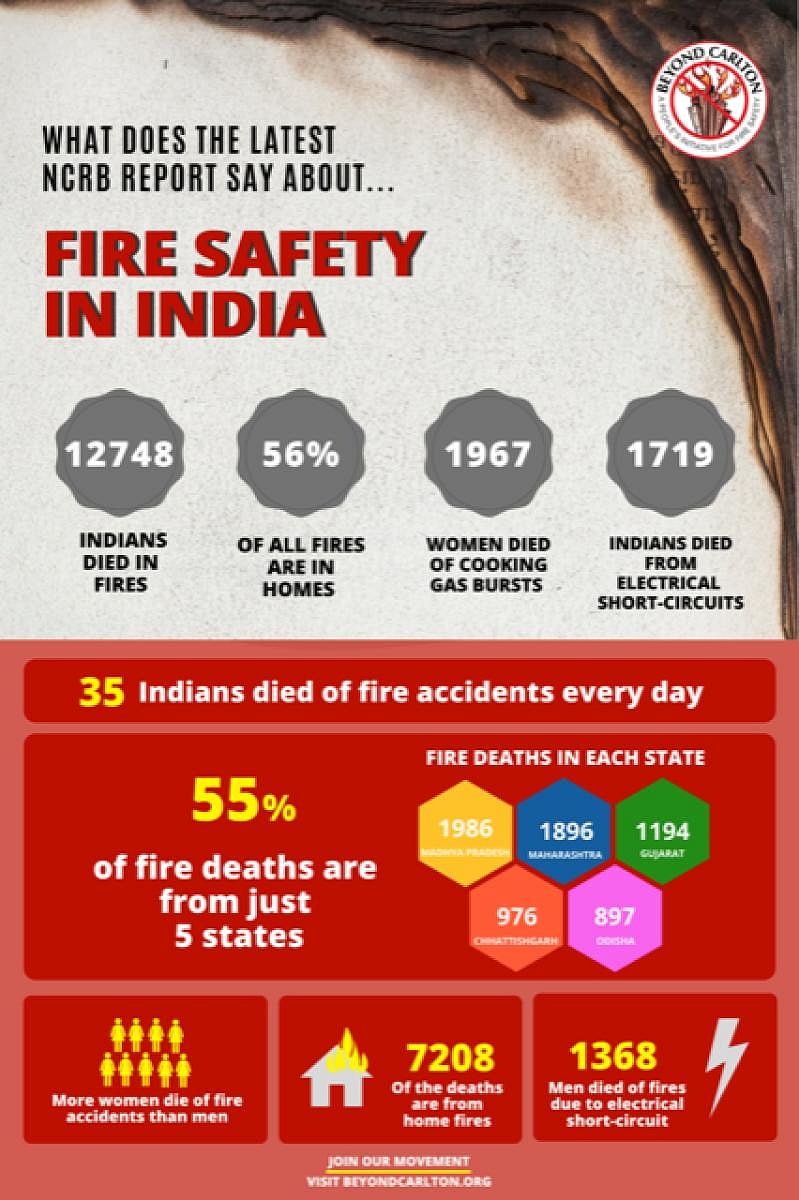
Thirty-five Indians die in a fire incident daily, says the National Crime Records Bureau (NCRB) based on the 12,748 lives in 2018. For the city-based fire-safety collective, Beyond Carlton, this is another reason to redouble its fight, a battle that it began 10 years ago when the Carlton Towers fire snuffed out nine lives.
Of the fire fatalities in 2018, as many as 4,290 were in the 18-30 age group and 3,860 in the 30-45 age group.
“These vulnerable age groups together accounted for 63% of all fire-related deaths,” notes Uday Vijayan, who had started Beyond Carlton after the February 23, 2010 tragedy that killed his young son.
Vijayan has now proposed a national fire-safety law with strict deterrents on the lines of the Road Safety Act announced recently. “As we move towards rapid urbanisation and development, our governments should be more pro-active in implementing fire safety laws and creating awareness,” he says.
Mostly women victims
The NCRB data also reveals a clear gender factor: Fire victims are mostly women.
Of the 12,748 fire deaths in 2018, 7,244 were women. This could be related to another finding: 56% of the deaths were caused by home fires. As many as 7,208 fire accidents were reported from residences that year.
In the words of Vijayan: “It all seems to add up. The large number of women dying in fires, residential fires being the largest location for fatalities and cooking gas burst deaths all seem to add up. This clearly tells us our homes are not really safe and need urgent attention and focus.””
Electrical short-circuits, the data shows, caused the death of 1,368 men. In all, 1,970 fire accidents were caused by electrical short-circuits. Maharashtra, West Bengal and Karnataka were the states with the most deaths.
“Our fire safety laws are archaic and our fire departments are not well equipped to handle the modern high-rise buildings,” says Vijayana. “We have sub-optimal fire infrastructure, fewer fire stations, poorly trained staff and low budgetary grants.”
Home are also increasingly becoming unsafe for a reason. “They pose a huge fire threat because we have so many inflammable items like upholstery, decorative material, electrical gadgets and LPG connections, among others. This is why most residential fires are caused by cooking fires and electrical short-circuits.”
